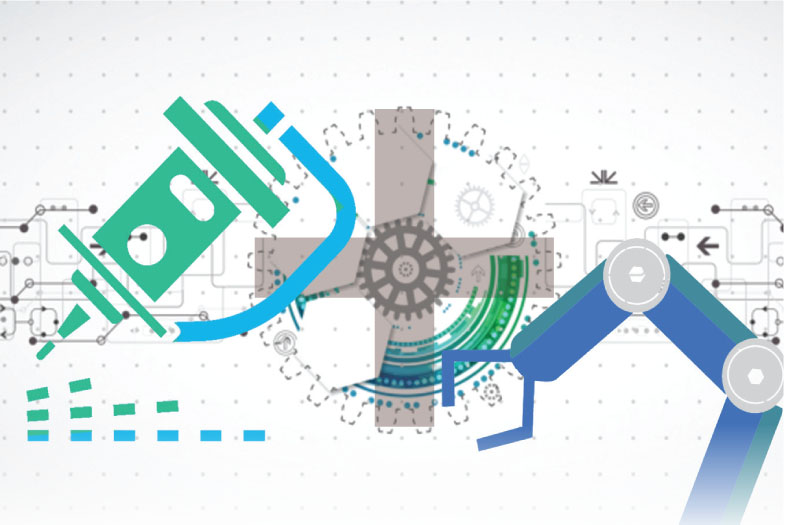CNC automation Growing beyond human skills
By OEM Update Editorial November 14, 2018 3:50 pm IST
Here’s an industry view on CNC machines, automation and its trends in smart manufacturing
Industry 4.0 refers to the fourth major industrial revolution. Steam and water power were initially used to operate machines, which reduced required human effort. Next, electricity increased productivity. Lastly, the third revolution integrated information technology into automating mechanical processes. Each of these revolutions dramatically changed production and available jobs. Industry 4.0 promises to do the same.
Industry 4.0 is developed to configure CNC machine with automation and robotics. Globally it’s a well-accepted concept and same is appreciated and implemented by many Indian customers. Data collection and monitoring is very much easy with automation, say industry leaders.
Automation vs CNC machines
With innovative technologies, roles and tools will change. Today, many CNC machine shops are equipped with computer-aided manufacturing software. But, this change doesn’t make them Industry 4.0 compatible.
Mayank Tripathi, Area Manager Sales North India, Hurco India, says, “The reason behind the concept of CNC machines is to become system dependent rather than depending on human skills. For that, automation is becoming a necessity. After implementing automation we can increase our productivity up to twice. Manpower crisis is hitting the production schedules and some specific applications can be done effectively only with automation. Soon, we will see CNC technology and automation evolve just as the Internet has done, and continues to do. It has expanded into the hands of millions of people and gives them the ability to do things that we might have only seen in science fiction movies.”
Tripathi claims, “I can say in one line that CNC machine with automation is the future of industry.”
Pavan Sadarjoshi, Product Specialist-Motion & Drive, Beckhoff Automation Pvt Ltd, says, “Implementing both assembly line automation and CNC machine automation have to work side-by-side for implementing the M2M connectivity. This is best achieved with a single automation software platform such as TwinCAT and PC-based hardware platform instead of multiple platforms used presently.”
Sadarjoshi further adds, “With TwinCAT software tool the CNC machine performance increases multi-fold and can significantly increase productivity and efficiency. This is possible only by using powerful industrial PC hardware-based control system and EtherCAT fieldbus communication protocol for external I/O device and Motion drive communication.”
Similarly, all PLC automation tasks and CNC functions can be implemented by using standard PLC and Kinematic Motion libraries available in TwinCAT in the same PC hardware. This optimises use of CPU capacity and enables fast communication resulting in the lower PLC cycle time and the machine cycle time. This not only directly contributes to higher production volume, but also high quality output.
In addition, manufacturers today demand machine data, process data, rejection data, data analytics etc. for the jobs that are being produced. This requires the seamless connectivity between the CNC machines, automation systems and automated test systems. These should be connected in a network for data exchange while executing the automation tasks on the job.
Sadarjoshi says, “PC-based control hardware has this networking capability by default. Further, if IT software platform is also an integral part of the programming tool then real time data acquisition, data exchange and handshaking with other machines or analytic software becomes extremely easy and customisable.”
Successfull rate
Tripathi says, “CNC applications will not necessarily create new objects, but rather automate processes that once had been done by hand. CNC paint sprayers, or etching devices can be moved with more precision that any human can achieve. Industries have sprung up around these applications.”
Tripathi says, “We are in the middle of another industrial revolution – our fourth. As a result of these revolutions, products are manufactured faster and with higher consistency, and the products we are able to develop are increasingly complex and have greater value to consumers. The industrial revolution we’re experiencing now, commonly referred to as Industry 4.0, is powered by advancements that include smart manufacturing, robotics, artificial intelligence and the Internet of Things (IoT).”
Industry 4.0 is the integration of manufacturing automation and data exchange, to create what has been dubbed as a ‘smart factory’. These factories will be controlled by a virtual production line that runs systems and monitors and completes their physical processes. These systems will communicate in real time, whether that means a customer tracking the progress of his or her order’s production, or a company ensuring the quality of its operations. Simply put, connected software systems will run our physical manufacturing automatically. To achieve this Industry 4.0 goal will be challenging for manufacturers, but within their grasp. Industry leaders are emerging who have broken away from the traditional factory structure and built companies spearheading the charge.
Sadarjoshi concludes, “Energy and production data capturing and analysis of data for the machine and process optimisation are in demand for controlling the product cost and also for managing the machine asset in the long run. With the process data and machine data available, predictive maintenance is possible and the overall product lifecycle cost can be lowered by timely actions. Energy management is another fast demanding trend at machine level.”
I can say in one line CNC machine with automation is the future of industry
Mayank Tripathi, Area Manager Sales North India, Hurco India
Energy management is another fast demanding trend at machine level
Pavan Sadarjoshi, Product Specialist- Motion & Drive, Beckhoff Automation Pvt Ltd
Cookie Consent
We use cookies to personalize your experience. By continuing to visit this website you agree to our Terms & Conditions, Privacy Policy and Cookie Policy.


















